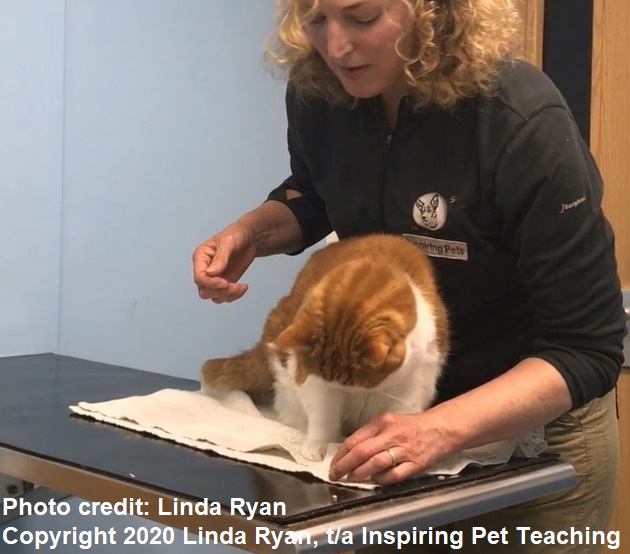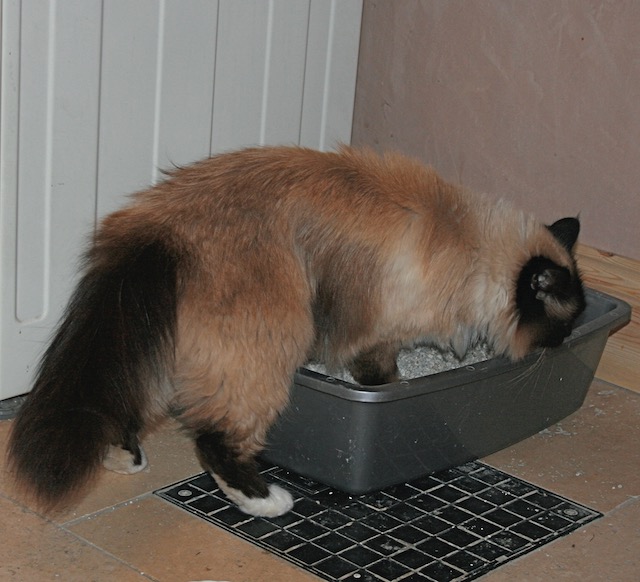
Help! I think its a Behaviour Case.
HELP……………I THINK ITS A BEHAVIOUR CASE!
Although animal behaviour is now being taught on some of the veterinary and veterinary nurse courses, historically it wasn’t covered at all which can make being presented with a potential behaviour case in general practice a bit daunting for some! Don’t worry, help is available, and we hope this blog will provide some assistance in deciding how to approach these cases and where to look if you need to refer to a behaviourist.
The importance of considering Behaviour
Behaviour is a reflection of internal emotions. It is influenced by genetics, the underlying personality of the animal, their early life and their later experiences. Physical health and emotional health are inter-related and both contribute to the overall welfare of an animal. On registration with the RCVS, vets sign a declaration that they will constantly endeavour to ensure the welfare of animals in their care, as well as their health. It is therefore important for vets to be able to address behavioural issues in a constructive way, in order to safeguard the welfare of their patients. In many cases, behavioural issues can be more easily dealt with at early stage than when they have become more established, so clients should be encouraged to discuss their pets’ behaviour at routine appointments. Veterinary practices should be the best place for clients to get advice about behaviour, to avoid them seeking it from more inappropriate sources. Even when practice staff don’t have specific knowledge themselves, they need to know how to access it.
Preventative advice
For basic behaviour and training advice, particularly for puppies and kittens, owners can be directed to the websites of various rescue and behaviour organisations. This can usefully be part of nurse consultations in which prevention of other health problems are also discussed. The following have appropriate up-to-date advice: Dogs trust, RSPCA, Blue Cross, APBC and, of course, our own Fellowship of Animal Behaviour Clinicians
Clients seeking training courses for puppies should be directed to classes that are run using positive reward-based methods such as: The Association of Pet Dog Trainers, Professional Association of Canine Trainers (PACT), Puppy School, or The Dogs Trust
The link between physical health and behaviour
Behavioural change can be the first indication of a medical condition as discussed below. Emotional health (reflected in behaviour) can also affect physical health. Constantly feeling fearful or anxious leads to chronic stress which can depress the immune system and other body systems, including the bladder in cats who are predisposed to developing feline interstitial cystitis. Chronic pain can increase anxiety, which in turn influences pain perception.
What is a “Problem Behaviour”?
In some cases, the behaviour that owners report to be a problem is actually normal behaviour that is expressed in a way that the owners consider inappropriate.
In other cases, problematic behaviour may be caused by underlying emotions of fear and anxiety which adversely affects the animal’s welfare and may be preventing them functioning normally.

The role of the reception team
A receptionist is the first point of contact when a client gets in touch with the veterinary practice about their pet’s behaviour problem. They need to ascertain the urgency of the situation when allocating an appointment to the client. For most behavioural problems it is appropriate to arrange a double appointment or one at the end of a consulting session when time pressure on the vet is likely to be less. It is also helpful if the receptionist can find out whether the pet is likely to be anxious or fearful during a vet visit and whether dogs are likely to be reactive to other dogs or unfamiliar people in the waiting-room. This will allow appropriate preparations to be made when the owner and pet arrive at the practice. For example, anxious pets could remain in the clients’ cars until the time of their appointment. The owners of anxious cats could be provided with a Feliway-sprayed towel to put over their carrier. The owners of dogs who are reactive to other dogs or people could be allowed to enter the practice through a back door rather than through the waiting-room. Reducing exposure to triggers in this way will help to prevent these animals becoming too stressed prior to their examination. It is also helpful if reception staff can suggest that owners record videos of their pet in relevant situations, as long as this does not involve putting anyone at risk.




The veterinary consultation
When the client and animal have arrived in the consulting-room, the first step is to take a thorough history including the age of the animal, duration of the problem behaviour, any associated events or changes in the household or environment, any associated physical changes in the animal, how the behaviour has progressed and how the owner has reacted. During the Covid-19 pandemic, it will probably be necessary to take the history over the phone or in the practice carpark before taking the animal into the practice. When the owner is present in the consulting-room, food treats can be sprinkled on the floor or examination table for the animal to search for, while the history is being taken. This should help them to relax before they are approached by the vet.
The history may suggest the presence of a medical condition. Changes in toileting behaviour are often particularly illuminating. Elderly cats who have osteoarthritis or other musculoskeletal problems may start urinating or defaecating inappropriately indoors if they find it difficult or painful to get into their litter trays, or to get through the cat flap to access outside toileting sites. Cats who are suffering from lower urinary tract disease such as feline interstitial cystitis often have frequent sudden urges to urinate and may do so somewhere in the house if unable to access their litter tray or get out of the cat flap quickly. They frequently also associate the pain of urinating with the litter tray that they are using at the time, and therefore avoid urinating in it in future. Animals who have become polydipsic due to a range of medical conditions may not have sufficient bladder capacity to be left as long as they used to be without having ‘accidents.’ Dogs who start to steal food or develop food-guarding tendencies may have developed a condition which has increased their appetite and made food more valuable to them (such as Cushing’s disease or a gastrointestinal malabsorption problem). Mature cats who show a change in personality and food-stealing tendencies may have developed hyperthyroidism. Elderly animals showing personality changes may be suffering from age-related cognitive dysfunction. Middle-aged or elderly animals who suddenly develop irritability or aggression are very likely to be suffering from pain.
The next step in the investigation of a behavioural problem is a full clinical examination. This may provide further evidence for the medical conditions whose presence was suspected from the history, or may prompt further investigations such as radiography, blood tests or faecal analysis.
A recent study examined data from cases referred to a number of clinical animal behaviourists and found that pain was identified as a cause for, or influence on, the behaviour problems reported in 28-82% of the cases (Mills et al., 2020). The authors concluded that it is better for vets to treat suspected pain first rather than having to consider its significance only when the animal does not respond to behaviour therapy.
It can be difficult to diagnose pain in a routine first opinion consultation, however. The vet is only seeing the pet for a short time in the confined space of a consulting-room so subtle lameness and gait change may be difficult to pick up. The pet may be fearful and anxious, leading to body tension which hinders examination. Abdominal pain may be intermittent and associated with eating, or anticipation of eating, so may not be apparent during an examination anyway. Stress hormones may also affect neuronal pathways during a consultation to ‘over-ride’ pain to some extent. Despite the precautions taken, some animals will be too fearfully aggressive for a meaningful examination to be carried out. Some of these constraints can be overcome by examining videos recorded by owners at home.
Analgesia Trials
Even if no radiographic or other evidence of pain is found, it is still worth explaining to the owner that the possibility of undetected pain should not be ruled out. Where a strong suspicion for the presence of pain remains, it may be appropriate to offer an analgesia trial. This needs to be at least 4-6 weeks in duration and ideally 8 weeks or more in order to definitively rule out pain as an underlying factor if it is not present. Where the presence of chronic pain is suspected, it can be beneficial to use more than one analgesic agent at once as the best means of achieving significant pain relief. The reasons for using a long duration trial are that it takes time for the central sensitisation that can occur with chronic pain to decline, and time for the animal to recognise that a stimulus that used to predict an exacerbation of pain (and resulted in an aggressive response for example) no longer does so. It also takes time for a behaviour change to occur when the animal no longer feels pain and for the owner to notice this change.
In some cases, treatment or resolution of a medical condition may not be sufficient to ‘cure’ the behaviour changes that occurred as a result of it. For example, cats who lick the skin of their ventral abdomen in response to bladder pain from feline interstitial cystitis, or the irritation caused by a flea infestation, may continue to over-groom when the cystitis bout is over, and the fleas have been eradicated. Dogs who show defensive aggression towards other dogs who jump on them when they are experiencing pain may learn that the approach of other dogs predicts pain and remain reactive towards them when their chronic pain is being effectively treated. It may therefore be necessary to seek behavioural advice for such animals even if the initial cause of the behavioural change has been identified.
Role of the Behaviourist
For animals who are showing problem behaviour, after potential medical influences on behaviour have been ruled out, or taken into account, it may be necessary to refer to an animal behaviourist if there is no-one in the practice with up-to-date behavioural expertise. A clinical animal behaviourist will be able to carry out an in-depth investigation of all the influences on the animal in order to assess the most likely underlying causes of the problematic behaviour, including the emotions the animal is experiencing and the motivation for the behaviour. They will then produce an individualised behaviour modification plan for the owners to implement with their support. The initial consultation will usually take 1-2 hours and sometimes more. In many cases behavioural modification involves changing an animal’s emotion towards a particular stimulus which takes considerable time. There are rarely quick solutions to behavioural issues, despite the impression given by clever editing in the production of popular TV programs on the subject.
In some cases, the behaviourist may identify that a dog or cat is experiencing such severe anxiety that they would benefit from anxiolytic medication to improve their welfare and enable them to benefit from the behaviour modification plan. Otherwise, extreme anxiety may prevent them being able to learn. The behaviourist will discuss this with the referring vet who would be responsible for prescribing any such drugs. Referring vets who are inexperienced in the use of psychoactive medication may want to seek the advice of a vet behaviourist at this stage, if the clinical animal behaviourist they have referred to is not a vet.
Who to refer to
Vets have a responsibility to refer to a person “whom they are satisfied is competent to carry out the investigations or treatment involved”. In the behaviour field there are many membership organisations and the terms ‘clinical animal behaviourist’, ‘animal behaviour counsellor’, ‘animal psychologist’, and ‘animal therapist’ etc are not legally protected so anyone can claim to be an animal behaviourist. It can be confusing to negotiate the acronyms of the many training and behaviour organisations and to discover where to seek appropriate advice.
In 2010 the Animal Behaviour and Training Council (ABTC) www.abtc.org.uk was set up to provide some regulation in the animal behaviour and training industries. It ‘sets and maintains the standards of knowledge and practical skills needed for each level and maintains a list of the animal behaviour clinicians whom it has registered on its website. Some of these are vets who are listed as veterinary behaviourists (VB’s), the other behaviourists are listed as CAB’s (clinical animal behaviourists). There are two practitioner organisations whose members can become registered by ABTC. Certificated members of the Fellowship of Animal Behaviour Clinicians (FABClinicians) are ABTC- registered CAB’s or VB’s and are also listed on the ‘Find a behaviourist’ page on the FAB Clinicians website https://fabclinicians.org/find-a-behaviourist/ .
Some pet insurance policies cover behaviour consultations by ABTC-registered clinical animal behaviourists, but clients need to check their own policy and possibly get pre-authorisation.
Candidate members of FAB Clinicians are working towards independent accreditation. They work by the same Code of Conduct as registered members which requires that they have appropriate professional indemnity and public liability insurance, and do not take on work beyond their competence. This code of practice also requires all members to take appropriate steps to ensure that medical influences on behaviour have been investigated by working in conjunction with vets.
How to arrange a referral
When a client has agreed to be referred to a behaviourist, the vet needs to research the ABTC-registered clinical animal behaviourists in the area. For behaviourists offering virtual on-line consultations, it is not so important that they are local to the client, but it can have advantages for dog owners if the behaviourist is familiar with the local conditions and areas that are suitable for walking reactive dogs, for example. It may also be beneficial to provide in-person follow-up consultations when Covid restrictions allow.
The vet will need to obtain permission from the owner to provide their contact details to the behaviourist which can be included on a vet referral form, which also contains a section for a short description of the problematic behaviour.
Please click on the links to access our Behavioural First Aid advice for cats and dogs
Reference:
Mills, D. et al. (2020) “Pain and Problem Behavior in Cats and Dogs” Animals 10: 318


